A little history of graffiti
Graffiti was born in the streets of New York in the late sixties, becoming a means of expression and communication ideal for a large number of groups of young people from impoverished neighborhoods. Its location and its unconventional presentation, outside the museums and galleries, is what can generate doubts before the public that observes it.
In fact, this type of artistic manifestations can be similar to those made by prehistoric man in the caverns, or the mural paintings of Pompeii, or even the hieroglyphic texts of Egyptian art. Painting or leaving messages on the walls has accompanied human creativity since our inception.
Graffiti in the late 70's
At the end of the seventies graffiti reached its highest levels through the incorporation of new images that came from popular iconography: comics, portraits, cartoons, cartoons ... All this led to a great rivalry between graffiti writers who fought each other to emphasize on the rest, what originated the well-known "Wars of style" (Style Wars), although for nothing they were violent. Its purpose was to be the most prolific and thus achieve the respect of others. For this the writers formed groups known as "crews" thus increasing the number of signatures throughout the city. Artistically, they will develop scenes of great complexity, master pieces, in which they will highlight the hand of the great masters of graffiti through works of greater size, complexity and full of expressiveness:
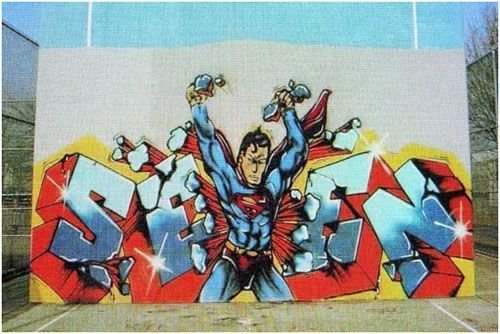
Graffiti painted by Seen
What originally had developed mainly in the subway and its garages, now would go to transcend the entire city, occupying its walls, facades ... all corners, but not for long.
Graffiti in the 80
In the early eighties, the MTA (Metropolitan Transit Authority) of New York begins to take measures such as toughen the penalties against graffiti writers, increase vigilance, the installation of new more sophisticated fences in the garages of the wagons of the subway, restricting the sale of paintings to young people, using the media, or even using political campaigns ... in order to eradicate this boom in graffiti and its fierce fight against writers, who are being called " buffs "(enthusiasts). All this will lead to graffiti immersed in a period of decline in which many writers, in their constant struggle to give rein to his work, cross the Atlantic, heading to Europe, to raise awareness of this subculture in the old continent.
This apparent decline of graffiti will mean a brief respite from the imminent arrival of a second boom by those more radical and aggressive writers.
We could say that in these years there is a phase that we could well define as survival, until in the mid-eighties an explosion and diversification of Hip-Hop will develop different styles of great complexity, reviving the flame of New York culture of writing. Everyone wants to be followers of hip-hop (b-boys). This will encourage the youngsters again and encourage the hope for the hope of reliving the old days by returning to the depots in Brooklyn to repaint those subway cars that have already been damaged and removed or simply take a picture with their piece in a car. of New York subway.
Be that as it may, the writing resurfaces among its ashes, although the old times will never come back. Graffiti artists that will stand out in these years will be: Jean Michel Basquiat and Keith Haring
Jean Michel Basquiat
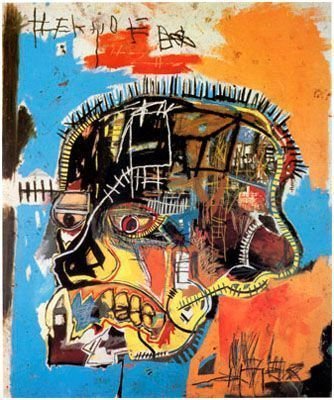
Jean Michel Basquiat, "Untitled (Skull)" (1984)
Basquiat is one of the most important New York graffiti artists of the early eighties. He lived in the marginal areas of New York and for a long time was a simple vagabond. Many of his graffiti were phrases of poetic content, philosophical or critical of bourgeois society. He painted in the corners of the city, including unconventional places and, even, in those objects he encountered on his way. We could say that it was Basquiat who showed that a street writer could be an artist of the highest level.
Keith Haring
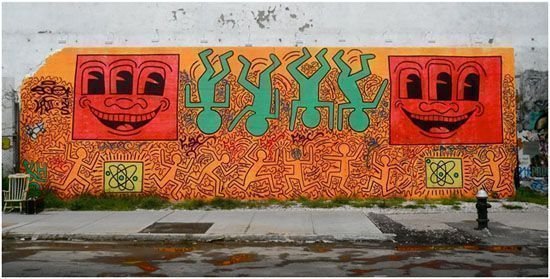
Graffiti by Keith Haring
In the eighties, Haring began to make graffiti on the advertising panels of the New York subway using markers and white chalk. Later he was extending his work to posters and other elements. His works are characterized for being compositions where he mixed human figures, animals, televisions, references to nuclear energy ... Being a different type of art quickly achieved great prestige and fame, even art museums began to exhibit their works.
Blek le Rat
As for Europe, the graffiti movement started in the mid-eighties comes along with two elements of Hip-Hop: break-dance followed by rap. With the arrival of American writers, tours began to appear throughout Europe, in the same way that Europeans move to drink from the origin of this new way of making art to the mecca of graffiti.
Day after day, the graffiti will be installed in the streets and appropriating more and more of the walls of the different European cities. One of the most outstanding street artists that will emerge in Europe will be Blek le Rat (he adopted this name by the name of the Italian comic Blek le Rat that he read as a child). Very influenced by the stencil (stencil) and graffiti he saw in a subway in New York, he began to express his work through the streets of Paris since 1983.
Through templates, his work is characterized by the representation of human figures of great realism, tanks of war, rats ... Bleck le Rat achieved his artistic recognition and international renown when his work was exhibited at the Georges Pompidou Center, one of the great modern art museums.
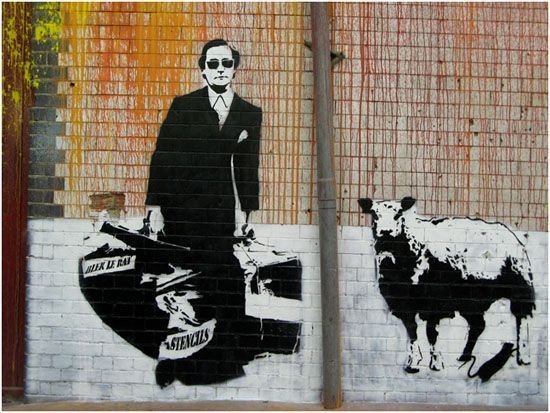
Graffiti by Blek le Rat
Bansky
Another graffiti figure and world famous is the British artist Banksy. Influenced by the work and the technique of stenciling using Blek le Rat template, his work is characterized by the representation of cynical criticism of current society, wars, militarism, child exploitation, climate change, consumer society ... made with spray, graffiti techniques and the use of templates by stenciling.
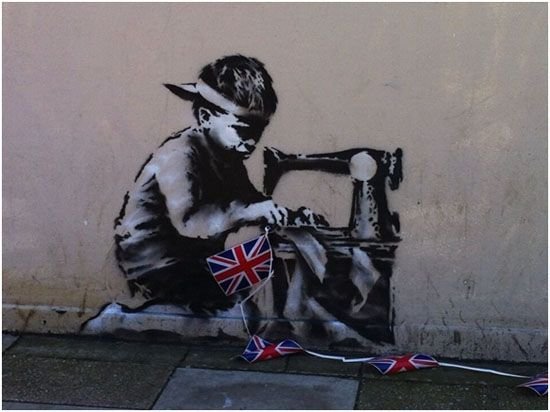
Banksy, Child Labor
Graffiti today
In the mid-nineties comes the Post-Graffiti, which consists of works generally made by a group of artists who work together using very diverse and varied techniques: posters, posters, stickers, collages ... much of this work is done in a workshop and is completed on the street, thus reducing the time of execution and exposure and, mainly, to be detected.
Over the years, the proliferation of graffiti day by day is increasing. Remembering the first fanzines, which were nothing more than black and white photocopies, the full-color legal publications that we can enjoy today, or the great leap that has taken place in the Internet field through all kinds of information that is collected through texts, blogs, chats ... does nothing but consolidate, develop and integrate into society that the art of graffiti is already part of our streets, our neighborhoods, our cities and of course, our lives .
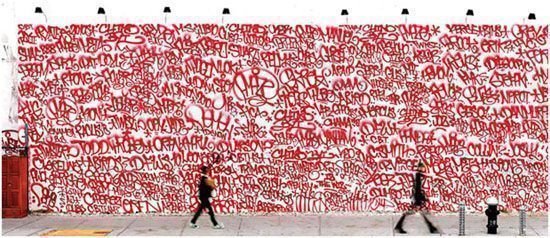
Graffiti is recognized as an art form, above the controversy that exists around it, its legality or link with vandalism, especially its more complex forms. If we imagined Picasso these days doing graffiti, it would be above all a work of art. If it were done on private or public property without permission, it is legally vandalism, but the artistic value is independent. Its location does not disqualify it as an art, but rather its artistic value.
Graffiti also ornaments inhospitable or unsightly urban places such as abandoned buildings or walls. In some way, the artistic graffiti converts them, transporting the viewer to other and unexpected places.
Although it is generally thought that graffiti art is an urban art of the children of impoverished neighborhoods, in reality many of its participants are middle and upper class people. Graffiti is a form of expression, of communication, it is even considered as a transgression against the economic and political order, or against the established art market and the art galleries system, but above all most consider it a form of expression fun and exciting
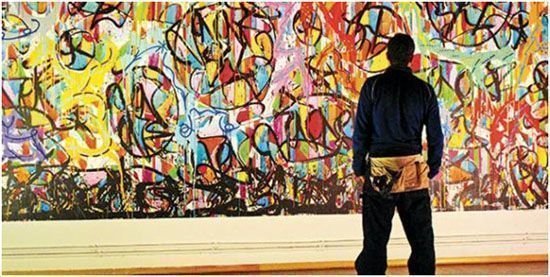
The art market only considers art as designated by the members of the artistic community, gallerists, museums and curators. Graffiti is out of this control, although many galleries and museums have already included it among their reference works since the 80s and 90s. Example of graffiti artists who have exhibited in galleries are Basquiat, Lee Quinones, Yaki Kornblit or Barry McGee. There are even cities that help them so that they can express themselves legally. Graffiti has thus become an art recognized by the public, where the artist connects with the viewer to show, in the purest state, his own intention.
Wellcome to Steemit.com
Thanks u!
Welcome to Steemit!
Grateful for the warm welcome
Wellcome to Steemit.com
Welcome to Steemit @romanokskermo :)
Thanks u!
Welcome to Steemit. It's really a good platform for the nurturing authors and for the people who want to share their good work with the world. You'll surely have a nice time here. Lots of good wishes and good luck to you!! :):)
hello, i am romesh akila welcome to steemit my friend.follow me
Hello brother, I follow him! regards